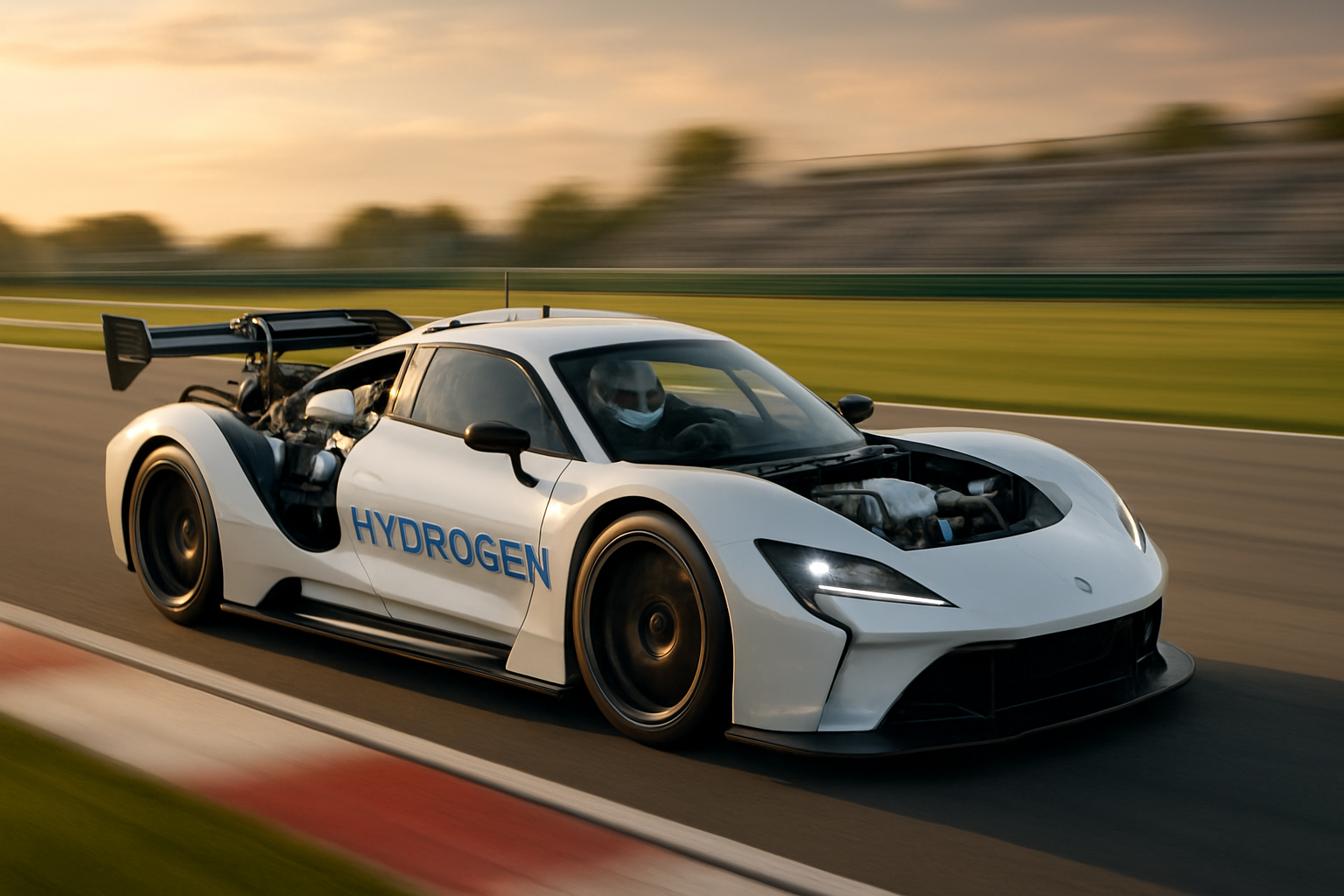Unveiling the Hidden Potential of Hydrogen Fuel Cells in Racing
The roar of engines, the smell of burning rubber, and the thrill of speed have long defined the world of motorsports. But what if we could maintain that excitement while drastically reducing emissions? Enter hydrogen fuel cell technology, a game-changing innovation that's quietly revolutionizing the racing industry. This cutting-edge power source promises to combine high performance with environmental responsibility, potentially reshaping the future of competitive motorsports.

The Science Behind Hydrogen Fuel Cells
At its core, a hydrogen fuel cell is an electrochemical device that converts hydrogen and oxygen into electricity, with water as the only byproduct. This process is remarkably efficient, often achieving energy conversion rates of up to 60%, compared to the 20-35% efficiency of traditional internal combustion engines. In a racing context, this translates to more power delivered to the wheels with less energy wasted as heat.
The fuel cell itself consists of an anode, a cathode, and an electrolyte membrane. Hydrogen is fed into the anode, where it’s split into protons and electrons. The protons pass through the membrane to the cathode, while the electrons are forced through an external circuit, generating electricity. At the cathode, these components combine with oxygen from the air to produce water.
Hydrogen’s Race to the Podium
While hydrogen fuel cells have been around for decades, their application in motorsports is relatively new. The technology first made waves in 2013 when Aston Martin raced a hydrogen-powered Rapide S at the 24 Hours of Nürburgring. Since then, several racing series have begun exploring hydrogen as a viable alternative to traditional fossil fuels.
The most notable of these is the newly announced Hydrogen Class at the iconic 24 Hours of Le Mans, set to debut in 2026. This groundbreaking category will see purpose-built hydrogen-powered prototypes competing alongside conventional race cars, marking a significant milestone in the adoption of this technology in high-performance applications.
Advantages on the Track
Hydrogen fuel cells offer several distinct advantages in a racing environment. First and foremost is their rapid refueling capability. While battery electric vehicles can take hours to charge, hydrogen tanks can be refilled in minutes, aligning perfectly with the fast-paced nature of motorsports.
Moreover, hydrogen fuel cells provide consistent power output throughout a race, unlike batteries which can experience performance degradation as they discharge. This characteristic is particularly valuable in endurance racing, where maintaining peak performance over extended periods is crucial.
The power-to-weight ratio of hydrogen fuel cell systems is another significant advantage. As the technology continues to evolve, these systems are becoming increasingly compact and lightweight, allowing for better weight distribution and handling characteristics in race cars.
Overcoming the Hurdles
Despite its promise, hydrogen fuel cell technology in racing faces several challenges. The most pressing is the current lack of infrastructure for hydrogen production and distribution. Unlike electricity, which benefits from an existing grid, hydrogen requires specialized facilities for production, transportation, and storage.
Safety concerns also present a hurdle, particularly in the high-risk environment of motorsports. While hydrogen is no more dangerous than other fuels when handled properly, its flammability and the high pressures involved in its storage require robust safety protocols and specialized equipment.
Cost remains another significant barrier. Currently, hydrogen fuel cells are more expensive to produce than traditional engines or battery electric systems. However, as with any emerging technology, costs are expected to decrease as production scales up and efficiency improves.
The Ripple Effect: From Race Track to Road
The impact of hydrogen fuel cell technology in racing extends far beyond the confines of the track. Motorsports have long served as a proving ground for automotive innovations, and hydrogen fuel cells are no exception. The extreme conditions of competitive racing provide an ideal environment for rapid development and refinement of this technology.
As hydrogen fuel cells prove their mettle on the racetrack, we can expect to see accelerated adoption in consumer vehicles. This transition could play a crucial role in reducing global carbon emissions, particularly in sectors where battery electric vehicles may be less practical, such as long-haul trucking or public transportation.
The Future of Clean Speed
As we stand on the precipice of a new era in motorsports, hydrogen fuel cell technology represents more than just a novel power source—it embodies the potential for a sustainable future in high-performance racing. While challenges remain, the momentum behind this technology is undeniable.
From Le Mans to local circuits, the quiet hum of hydrogen-powered race cars may soon become a familiar sound. As engineers and drivers push the boundaries of what’s possible with this clean energy source, we’re not just witnessing the evolution of racing—we’re seeing a glimpse of the future of transportation itself.
In the coming years, the success of hydrogen fuel cells in motorsports could pave the way for widespread adoption across the automotive industry. As we cheer on these pioneering race cars, we’re also cheering for a cleaner, more sustainable future—one where the thrill of speed and the imperative of environmental responsibility can coexist in perfect harmony.





